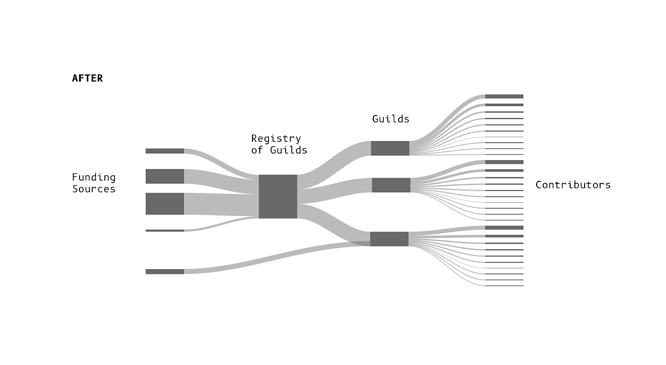Web3 Funding Fatigue: a growing problem
Investigating the funding fatigue in supply and demand side web3 public goods.
Authors: Vengist + Owocki
TLDR
“Funding fatigue” is a growing issue in Web3 public goods funding.
Grantees experience fatigue from maintaining and promoting multiple grants across platforms, while funders face overwhelming requests and high attention costs in evaluating numerous proposals. The system’s complexity is a barrier for both sides.
Proposed solutions:
- Aggregation: Aggregating labour supply and demand.
- Mechanisms: Introducing a “common app” for grantees, interoperable registry protocols, weighted lists for funding, and tools like Drips, 0xsplits, and Protocol Guild Forks to streamline the process.
Introduction
Public goods funding in Web3 is essential but increasingly strained by “funding fatigue.”
Grantees are overwhelmed by managing and promoting multiple grants across fragmented platforms, while funders struggle with an influx of proposals and high computational costs in evaluating them. This imbalance between supply and demand complicates the funding process.
Grantees face visibility challenges, needing constant promotion, while funders must navigate numerous deserving projects with limited resources. The system’s complexity worsens these issues.
Our proposed solution is aggregation. By formalizing grantee applications and funding decisions through tools like a “common app,” registry protocols, and guilds, the process can be simplified, reducing strain on both funders and grantees. Protopian increase in probabilities that desired public goods are realized.
Problems:
Grantee fatigue: supply-side
Grantees have to maintain grants on many diff platforms, across (often) multiple grants. And for QF they have to shill each of them. This is causing grantee fatigue.
Combating the matthew’s effect: intensive effort to become visible in the distributed, complicated public goods funding ecosystem.
Supply fatigue: demand-side
There are DAOs that are overwhelmed with requests for funding from multiple worthy (but attention consuming to validate) causes.
Computational overhead:: observing, orienting, deciding, acting all take too much computation currently for a funder to navigate the public goods funding ecosystem, mismatch of supply and demand. The system is currently very complicated, instead of complex.
Solution
Aggregation of Supply
Grantee Common App - a webapp that allows you to apply to multiple grant programs at once.
Registry Protocol Interop - build an a way to push/pull grants from one registry to another.
Aggregation of Demand
One solution may be Weighted Lists of causes that share sales/marketing/governance responsibilities.
One important primitive here is the self-curating registry (SCRs), popularized by protocol guild. SCRS (and nested SCRS of SCRS) could self to aggregate demand to navigate the funding of the commons.
Useful tools: Drips, 0xsplits, Protocol Guild Forks
Computation savings: Aggregated guilds act as high level strategies that funders can more easily navigate. Each guild serves as specialized tactics down stream of high level strategies. The low governance overhead of the SCRs, simply maintenance of the registry’s weights, allows for low-cost formation and operation of guild-like entities.
Ex. A self-curating registry of ethereum public goods
Because SCRs are just a simple address with governance + splitting logic, they can be chained and nested together in a number of interesting ways.
Let’s imagine creating an SCR to represent Ethereum Public Goods. Instead of individual contributors, we can just add various guilds with reputable contributions to public goods. We would only need to determine the orgs, and the funding flows directly through to their contributors, based on the logic local to their context.
Lets envision what funding flows look like before and after this fatigue issue is solved.
Conclusion
Addressing “funding fatigue” in Web3 public goods funding is critical to ensuring a sustainable ecosystem. The current system overwhelms both grantees and funders, leading to inefficiencies and missed opportunities. By focusing on solutions that aggregate supply and demand locally, both sides can operate with more efficiency and legitimacy. Tools like a “common app” for grantees and funding guilds for funders could reduce complexity, lower computational overhead, and improve the overall flow of funding. Simplifying these processes is key to maintaining the health and vitality of the Web3 public goods ecosystem.


